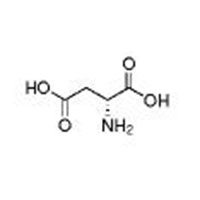Product Description
D-Aspartic acid, also known as DAA, is a non-essential amino acid that has gained popularity in recent
years due to its potential benefits for athletes and bodybuilders. In this product analysis, we will
examine DAA from the perspectives of its pharmaceutical applications, upstream and downstream market
trends, and the role of chemical suppliers.
Pharmaceutical Applications:
DAA has been studied for its potential role in increasing testosterone levels in men. Testosterone is an
important hormone for muscle growth and development, and DAA has been suggested to increase its
production. However, the research on DAA's effect on testosterone levels is still inconclusive, and
further studies are needed to confirm its efficacy.
In addition to its potential for athletes, DAA has also been studied for its role in treating
neurodegenerative diseases such as Alzheimer's and Parkinson's. Studies have shown that DAA can activate
certain receptors in the brain that are involved in learning and memory. However, more research is
needed to determine its effectiveness in treating these conditions.
Market Trends:
The global market for DAA is expected to grow in the coming years, driven by increasing demand from the
sports nutrition industry and pharmaceutical companies. According to a report by Transparency Market
Research, the market for DAA is expected to reach a value of USD 12.3 million by 2026, growing at a CAGR
of 4.4% from 2018 to 2026.
Chemical Suppliers:
DAA is primarily produced through chemical synthesis, and there are several chemical suppliers that
offer DAA as part of their product portfolio. Some of the key players in the DAA market include
Ajinomoto Group, Kyowa Hakko Bio, Changzhou Highassay Chemical, and BOC Sciences.
Upstream and Downstream Market:
The upstream market for DAA includes the raw materials and chemicals used in the production process,
while the downstream market includes the end-users of the product, such as sports nutrition companies
and pharmaceutical manufacturers.
The raw materials used in the production of DAA include fumaric acid and ammonia, which are readily
available in the market. However, the high cost of these raw materials can impact the price of the final
product.
The downstream market for DAA is driven by the increasing demand for sports supplements and
performance-enhancing drugs. Sports nutrition companies such as GNC and Optimum Nutrition offer DAA as
part of their product portfolio, while pharmaceutical companies are exploring its potential for treating
neurodegenerative diseases.
In conclusion, DAA is a non-essential amino acid that has potential applications in the sports nutrition
and pharmaceutical industries. While the research on its effectiveness is still ongoing, the global
market for DAA is expected to grow in the coming years, with chemical suppliers playing a key role in
the production process.





